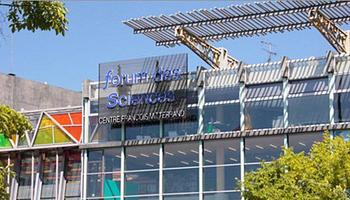Post-doctoral : Soot modelling in premixed flames - Effect of hydrogen and oxygenated compounds on soot nucleation and soot formation

Post-doctoral position at University of Lille (France)
Context and objectives
Reducing soot emissions from combustion processes is a major issue for energy and transportation industries. Many experimental and numerical investigations of sooting flames have been investigated over the past decades and have contributed to significant improvements in the understanding of the soot formation processes. However the transition from the gas phase to the solid phase leading to soot formation is not yet understood and this step is the subject of many efforts at PC2A laboratory by developing highly sensitive diagnostics, PAH modelling and more recently sectional approach for soot modelling*. Particularly all our recent activity is focused on premixed “nucleation flames” which have the special feature of producing nascent soot particles which undergo only minor soot growth along the flames. Therefore these flames are an excellent tool to better understand the nucleation process and have led to new input in soot modeling.
In the continuity of this research we are currently interested in the study of the influence of some additives on the sooting tendency in premixed laminar hydrocarbon flame conditions. The main objective is to identify the impact of hydrogen and oxygenated molecules on both gas and particulate phase chemistry in a wide range of operating conditions (equivalence ratios and proportion of the additives) including near-nucleation conditions.
A recent soot code based on the sectional method has been developed and its association with our kinetic mechanisms has been successfully carried out using Cantera code**. Our group wishes to recruit a postdoctoral researcher to support the development of this new theme. The person hired will support modelling soot volume fraction and particle-size distributions. The candidate is expected to be able to make the necessary improvements to the soot code for predicting the effect of hydrogen and oxygenated compounds on soot nucleation and soot formation.
*Mouton et al. Appl. Phys.B 112,369 (2013) ; Betrancourt et al. Aerosol Sci. Technol. 151, 916 (2017); El Bakali et al. Fuel 211, 548(2018) ; Desgroux et al. Combust. Flame 184, 153 (2017) ;
**Aubagnac-Karkar et al., Combust. Flame 189, 190 (2018)
Essential Requirements
Ph.D. degree in Chemical or Mechanical Engineering. The position requires skills in:
- Coding and software development skills (mainly C++/Python, other languages considered) in order to improve the existing sectional soot model implementation in Cantera;
- Detailed soot modelling (sectional or moment methods, stochastic approaches)
Application
For application, send a detailed CV which includes the list of publications, a covering letter and contact details to: Abderrahman El-Bakali / +33.3.20.43.48.04 Pascale Desgroux / +33.3.20.43.49.30
Position details
This work is supported by CPER CLIMIBIO. Month salary depends on candidate experience. Duration: 15 months. Start: at the latest September 2018.


